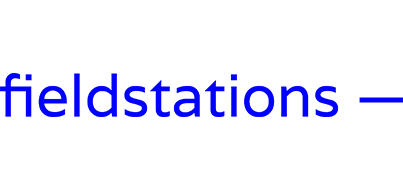The Expanded Field of Architecture
KU Leuven | Field Station Ghent
Architecture Master Design Studio 2016
Michiel Helbig, Corneel Cannaerts
Students: Aaron Derie, Nicolas De Paepe, Ramona Georgieva, Kevin Saey, Vincent Nulens, Younes Ben Amar, Lieselot Lust, Marine Boey, Tom Schoonjans, Maarten De Smet, Eliza De Meyer, Tsvetan Karamochev, Shervin Sheikh Rezaei, Stijn Colon, Marie Malingreau
THE EXPANDED FIELD
As the buildings on Teufelsberg and its layered history demonstrate, architecture cannot be reduced to just its constellation of material elements, and is subject to environmental, technological and cultural changes. The built reality is only one layer that makes up the environments we inhabit, it is embedded within other material and immaterial layers, and it contributes to larger economic, material, environmental, informational and infrastructural systems. Within the Field Station Studio, we see the expanded field, this constantly changing, layered and hybrid environment as the context that architecture operates in and actively engages with.
The question of how architecture operates and relates to the expanded field is central to the studio, three closely related evolutions give this question an immediate urgency: (1) The evidence of the impact of humans on our planet is so extensive, that scientists are proposing the dawn of the Anthropocene as a new geological epoch. While architecture and urbanization are major contributors to this impact, our way of thinking about and practicing architecture is modeled on a difference between nature and culture which can no longer be maintained. (2) Our environment is increasingly saturated by and mediated through technologies. Through sensors, mobile technology, big data, online platforms, augmented reality… technology is interwoven into the build fabric of our cities. Our culture is increasingly mediated through digital media: online blogs, social media providing a nonstop stream of information. Although this added layer of technologies, or techno-sphere, has as a drastic spatial and material impact, architecture seems to lack the tools of engaging with these spatial agencies. (3) Internet, social media, mobile technologies offer access to information everywhere and have the potential to change the way we act as a collective. This can be seen in informal actions like crowd funding, crowd sourcing, mass customisation, architecture can learn from these actions.
As a consequence of these points, the dichotomies that are at basis of architecture as a discipline are collapsing: there is no clear distinction anymore between nature and culture, between environment and building, between interior and exterior, between digital and material, between mediated and bodily experience. Within Field Station Studio, we see this layered, hybrid and technologically saturated environment as context, content and medium for architecture. These issues have the potential of rethink and expand our modes of operation, as architects we design embedded in this expanded field.
STATION AS AN ARCHITECTURAL TYPOLOGY
Military stations, observation posts and bunkers are only some examples of architectural structures that located on strategical border conditions within their surroundings, architecture has a rich and long history of stations as a typology: Form oil rigs, wind-mills, hydro stations, solar plants that harvest various forms of energy; Weather stations, telescopes, observatories, scientific field stations, space stations, that explore and map particular layers of our surroundings; Lighthouses, border checkpoints, customs, communication antenna that signal and demarcate different territories; To more modest refuges and cabins, that provide shelter.
All these building typologies, while different in scale and program, use spatial strategies- ranging from extracting, occupying, camouflage, sensing, observing, filtering, exploring, probing – and have as specific architectural articulation to negotiate with their environments. Stations also vary in scale, scope and how they relate to border conditions and how these change in time, from temporary or even mobile structures, dealing with time in seconds, over structures engaging with daily, monthly and yearly changes, to structures engaging geological time. The field station as an instance of an architectural typology is generally not a singular entity, it is situated within a field and relates to and communicates with larger networks. The studio builds on this lineage of architectural structures and how they relate to various fields and border conditions, their networks and architectural articulation.
ALTERNATIVE PRACTICE
Architecture can learn from contemporary phenomena, technologies and strategies, present in other disciplines, which might seem to be outside of the realm of architecture. We believe we need to alter our standard ways of understanding architecture and habitual modes of operation in order for architecture to be relevant in the expanded field. Adopting approaches from other fields of artistic and design practice, media arts, installation, performance, video games and interaction design, might enable us to disrupt disciplinary constraints and extend architectural practices into new domains. We are particularly interested in potential pathways being opened by new models of collaboration, open source, hacking, tinkering… etc. Students are actively encouraged to find their own set of tools media and modes of working, we expect a high quality and personal output.
Field Station Studio operates as a collective practice, breaking out of the confines of academic architectural education. The studio will travel and actively seek encounters with thinkers, makers, hackers and artists active in different fields (who are also interested in DIY, out of the box, open source, hacking). The studio will have sessions and meetings in Antwerp, Gent, Brussels & Berlin to gather information concerning investigated fields, to exchange alternative practices, to share experience and ideas.
FieldStation1617ExpandedFieldofArchitecture



